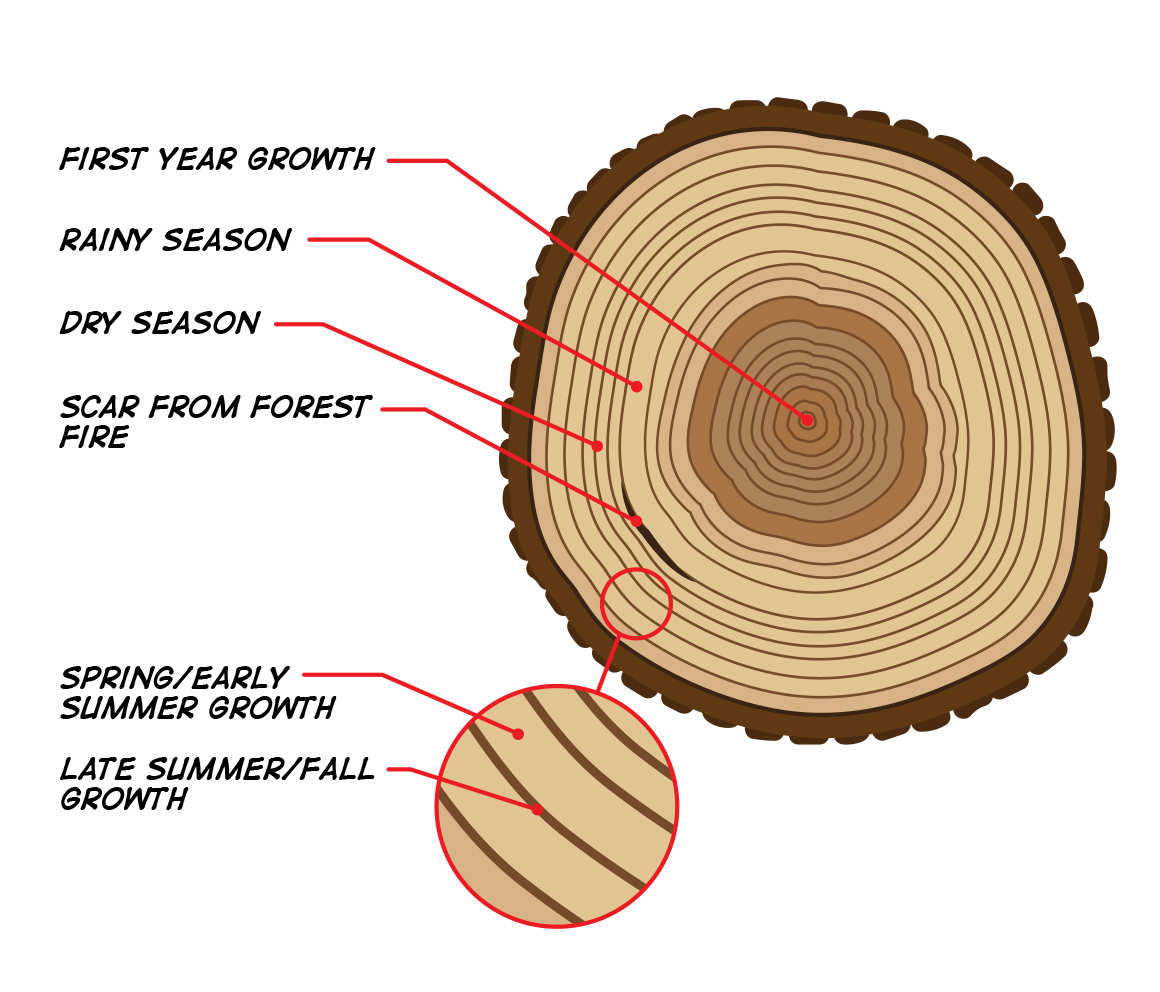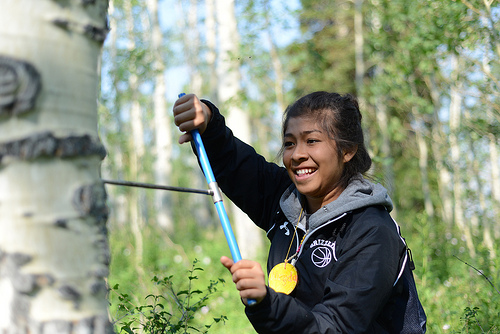What Can Trees Tell Us About Climate Change?

Image credit: Flickr user Bernard Spragg. NZ
Quite a lot, actually!
But to understand what the trees tell us, we first have to understand the difference between weather and climate.
Weather is a specific event—like a rain storm or hot day—that happens over a short period of time. Weather can be tracked within hours or days. Climate is the average weather conditions in a place over a long period of time (30 years or more).
Scientists at the National Weather Service have been keeping track of weather in the United States since 1891. But trees can keep a much longer record of Earth’s climate. In fact, trees can live for hundreds—and sometimes even thousands—of years!
One way that scientists use trees to learn about past climate is by studying a tree’s rings. If you’ve ever seen a tree stump, you probably noticed that the top of the stump had a series of rings. It looks a bit like a bullseye.

The light and dark rings of a tree. Image credit: Flickr Creative Commons user Amanda Tromley
These rings can tell us how old the tree is, and what the weather was like during each year of the tree’s life. The light-colored rings represent wood that grew in the spring and early summer, while the dark rings represent wood that grew in the late summer and fall. One light ring plus one dark ring equals one year of the tree’s life.

The color and width of tree rings can provide snapshots of past climate conditions.
Because trees are sensitive to local climate conditions, such as rain and temperature, they give scientists some information about that area’s local climate in the past. For example, tree rings usually grow wider in warm, wet years and they are thinner in years when it is cold and dry. If the tree has experienced stressful conditions, such as a drought, the tree might hardly grow at all in those years.
Scientists can compare modern trees with local measurements of temperature and precipitation from the nearest weather station. However, very old trees can offer clues about what the climate was like long before measurements were recorded.

This is said to be the Methuselah Tree, one of the oldest living trees in the world. Methuselah, a bristlecone pine tree in White Mountain, California is thought to be almost 5,000 years old. Image credit: Oke/Wikimedia Commons
In most places, daily weather records have only been kept for the past 100 to 150 years. So, to learn about the climate hundreds to thousands of years ago, scientists need to use other sources, such as trees, corals, and ice cores (layers of ice drilled out of a glacier).
Do you have to cut down a tree to see the rings?
No way! You can count the rings of a tree by collecting a sample with an instrument called an increment borer. The borer extracts a thin strip of wood that goes all the way to the center of the tree. When you pull the strip out, you can count the rings on the strip of wood and the tree is still as healthy as can be!

A student learns how to take a tree core sample with an increment borer in the Manti-LaSal National Forest in Utah. Image credit: USDA












